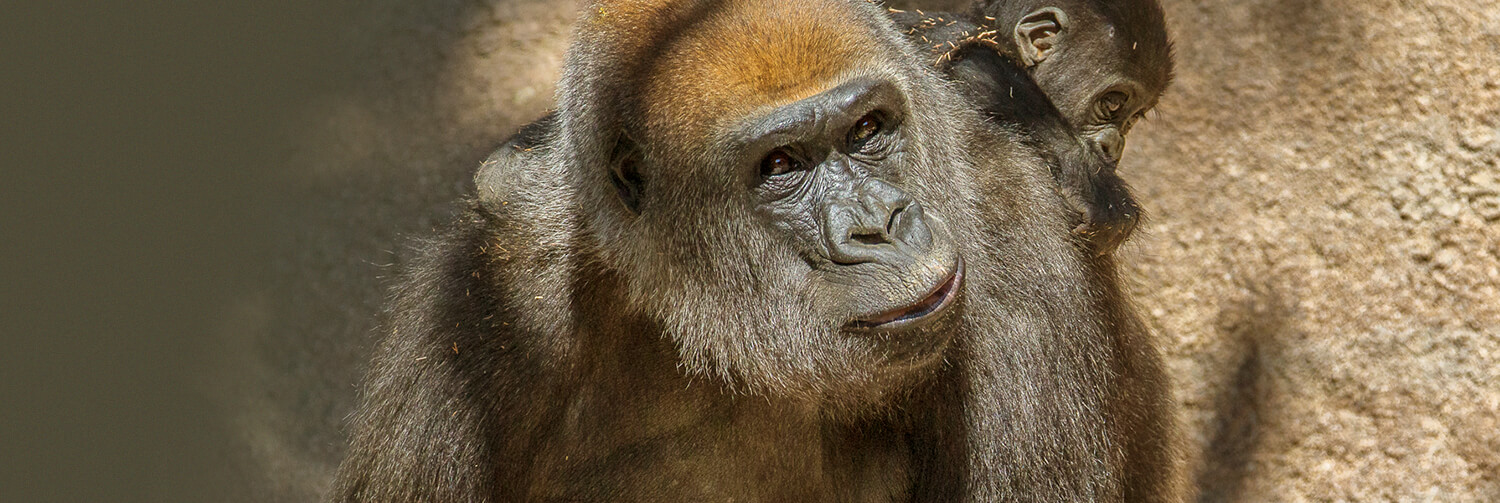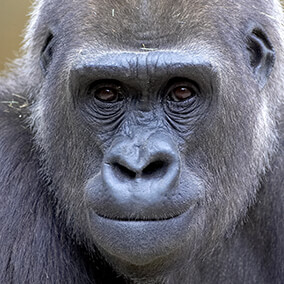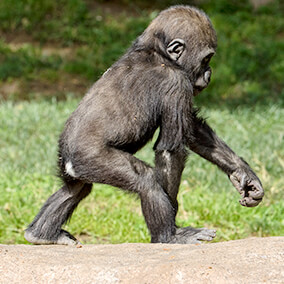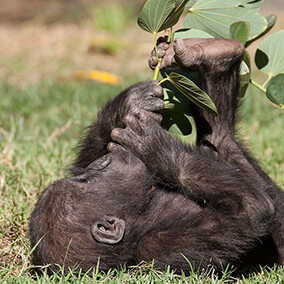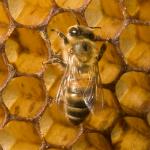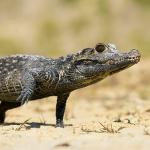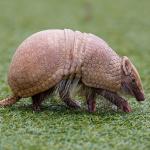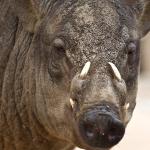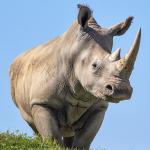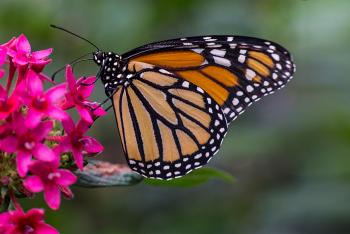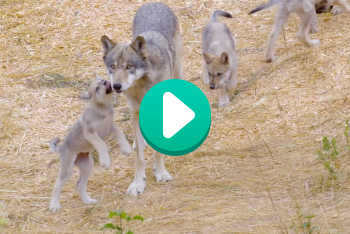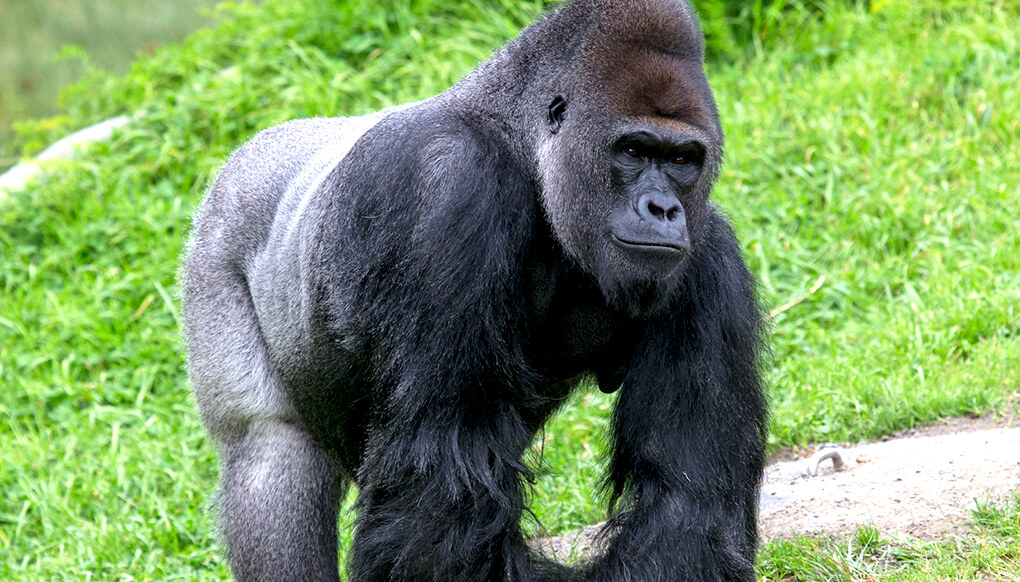
Western lowland gorilla

Mammals


Endangered
facts


Gorillas eat leaves, fruit, and seeds. They sometimes also eat insects.

description
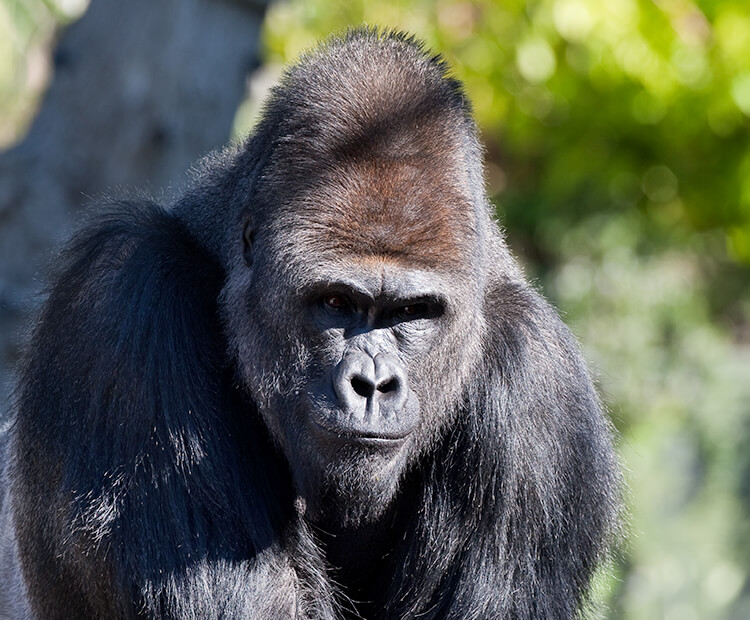
The big "guys"
Gorillas are the largest primates in the world. Adult males can weigh 500 pounds. These big guys are also known as silverbacks because of the color of the fur on their backs. Female gorillas are smaller than males.
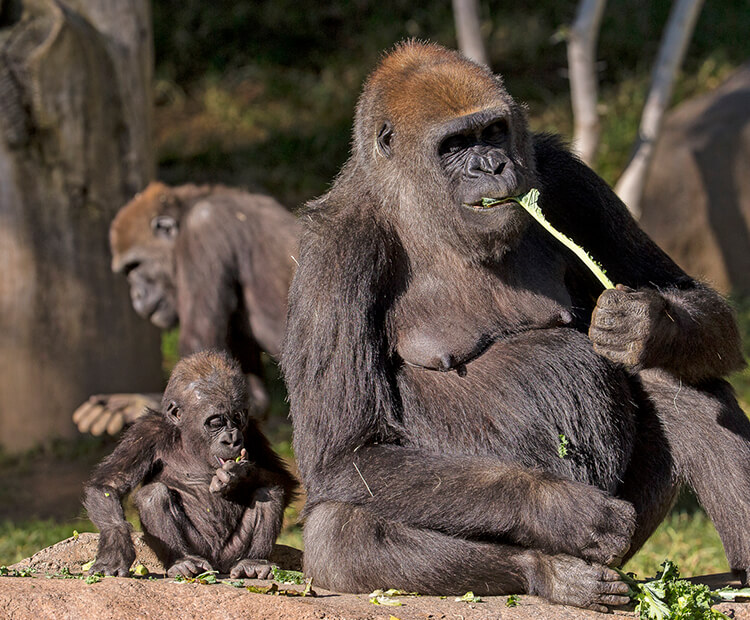
Terrific troops
Although they are sometimes shown in movies as being mean or scary, gorillas are very gentle animals. They live in groups called troops that contain a silverback, many females, and offspring. The troop travels around the forest together looking for food during the day. At night, each gorilla makes a nest to sleep in on the ground or up in a tree. A baby gorilla sleeps in its mother's nest until it is 4 to 6 years old.
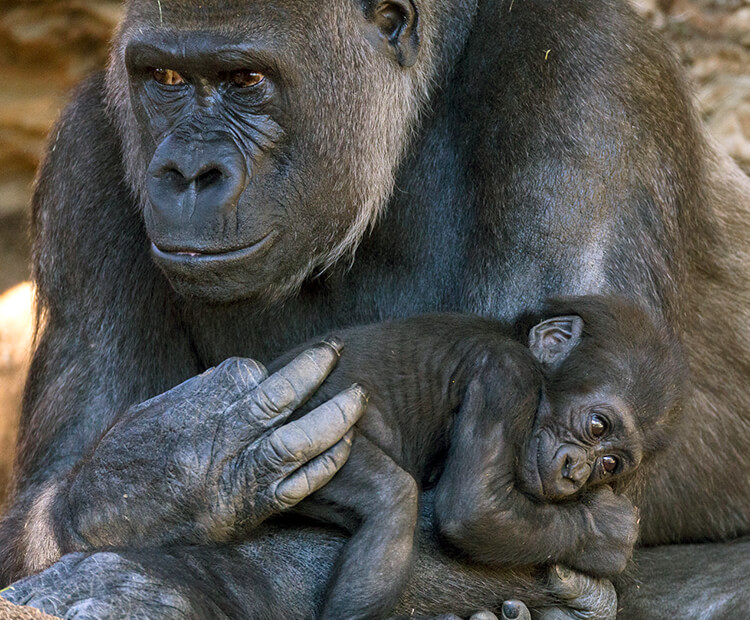
Vanishing spaces
Gorillas are endangered for a number of reasons. The forests they live in are being cut down by people, leaving the gorillas less space to find food and shelter. The loss of forests also makes it easier for hunters to find the gorillas.

